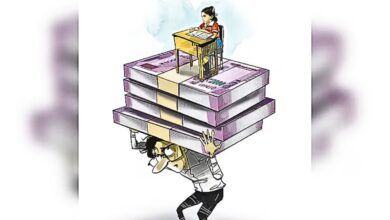Why is the Government Privatizing Public Sector Banks? As the Bank Strike gains more momentum, here’s looking as to what is at stake in 2021.
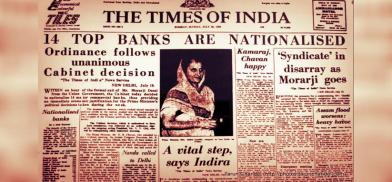
Government Privatizing Public Sector Banks
Nirmala Sitharaman, the Union Finance Minister, while presenting the Union Budget FY 2020-21 in Parliament, announced that the government had approved a policy of strategic disinvestment of public sector enterprises that will provide a clear roadmap for disinvestment in all non – strategic and strategic sectors.

Under a new initiative to sell state assets and to push government revenues, the government shortlisted four mid-size state-run banks for privatization.

The four banks under this purview are Bank of Maharashtra, Bank of India, Overseas Banks, and the Central bank of India; out of these, according to reports, two banks selected will be put up for sale in the year 2021/ 2022 in this financial year, starting April, although no official announcement regarding which are these banks have been made by the present government.
The announcement from the government has not gone down well with the employees of these respective banks.
The result is that India‘s biggest and largest banks union – UFBC (United Forum of Bank Unions) announced that they would be going on a strike in response to the government’s decision; the forum consists of nine banks whose employees and banking officials are part of this forum.
The reason for the strike is the government’s announcement that apart from IDBI (the announcement was made much earlier), two other banks are on the way to becoming privatized.
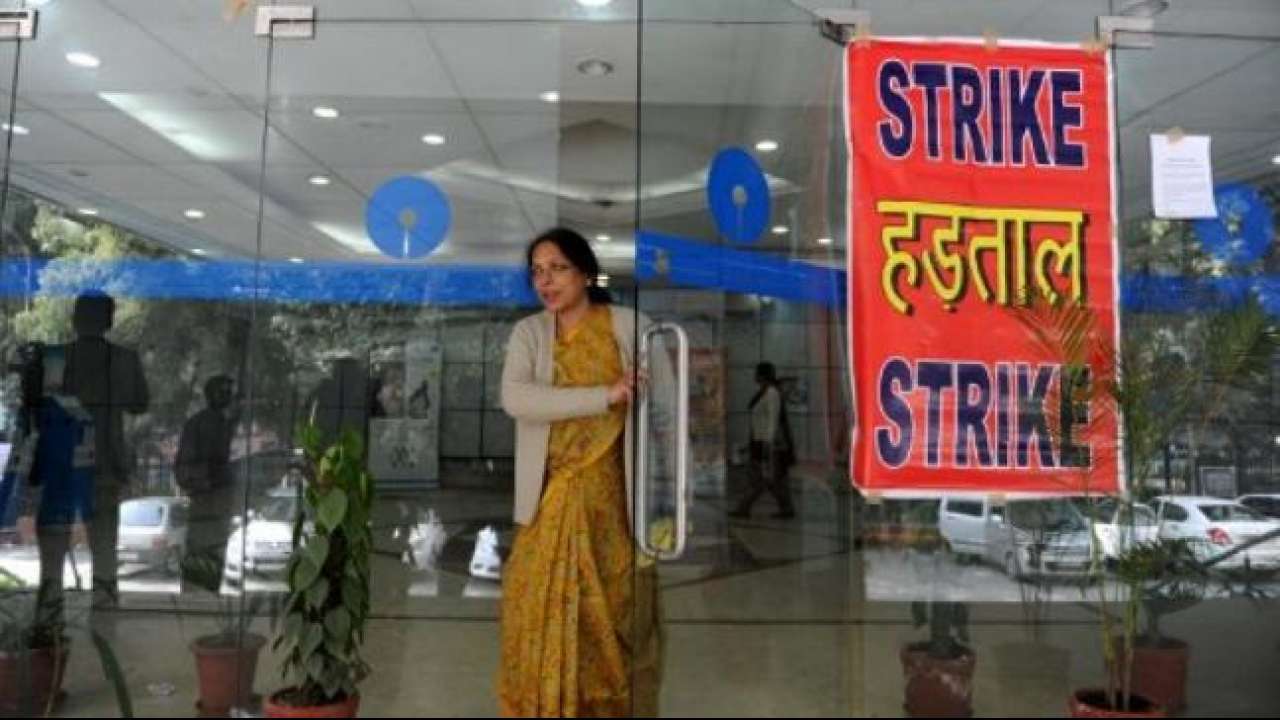
The Banks Union resort to strike
The bank unions have called the strikeout, and the reason cited for the same, according to the employees of these banks, is that instead of focusing on these banks’ infrastructure needs, the government is doing just the opposite.
Nirmala Sitharaman, in her Union budget presentation, had announced that this year apart from two public sector banks, a general insurance company too will be up for privatization.
However, before the announcement, IDBI Banks was already in the process of being made privatized, and the sale of the government’s stake in LIC was already announced last year.
Although the government has not disclosed until date which banks they might be looking to sell a part of their stake or entire stake as yet, but the grapevine is abuzz that the government is eyeing four banks for the same – however, no official statement has been released by the government verifying the same.
But the banks’ employees – approximately 1,22,000 strong workforce of these banks and others- are in a state of unrest.
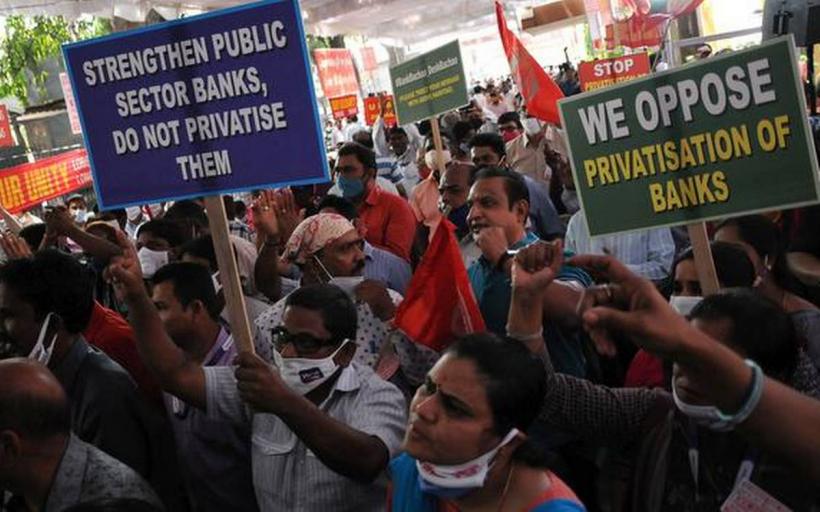
How much is the workforce of these four banks to be privatized in India?
Bank of India – has a workforce of about 50,000
Central Bank of India – has a workforce of about 33,000
Overseas Bank – has a workforce of 26,000
Bank of Maharashtra has a workforce of approximately 13,000
What is the reason for the move by the government?
The government has reasoned that by selling their stake, it aims to make the disinvestment proceeds to finance several social sector and development programs and also to infuse private capital, technology, and the best management practices in Central Government Public Sector Enterprise.
“A number of transactions, namely BPCL, Air India, Shipping Corporation of India, Container Corporation of India, IDBI Bank, BEML, Pawan Hans, Neelachal Ispat Nigam limited among others are proposed to be completed in FY 2021- 22”, announced Nirmala Sitharaman.
She also added that other than IDBI Bank, a proposal of privatization of two Public Sector Banks and one General Insurance company will be taken up in the year 2021- 22. The IPO of LIC would also be brought in through requisite amendments in the session itself. The minister informed the house that she had estimated Rs. 1,75,000 crores as receipts from disinvestment in BE 2020-21

How have the wheels turned?
On July 19, 1969, the Indira Gandhi government had nationalized fourteen banks; the reason given for the same then was that these banks were not fulfilling their social responsibility of taking forward the welfare of the entire nation and that the banks main and only concern was how much profit the owners of these banks were making.
And this reason is considered the main reason for the nationalization of banks, although, in 1955, the government had already taken the SBI into its own hands.
And following this, the Morarji government took another six banks under the nationalization umbrella; however, after fifty-five years, the present government is now set to spinning the wheel in the opposite direction.
In reality, after 1991, after the national reforms, it is being said that the government is only considered with doing business, and it is evident that the present government is hell-bent on doing privatization of all sectors and in all industries and hence it is ready to sell the national assets.

The current government has gone one step ahead and announced that even in strategic sectors, the government is not keen to focus on keeping them under its fold.
Another factor that the striking employees of government banks have pointed to is that the government has, in the name of harboring public support and garnering votes have constantly been announcing schemes regarding public sector banks, and the burden of the same has had to be borne by these banks.
And the biggest example of the same is the “loan repayment” by defaulters, because of which the bank’s operations and profit margins were compromised. The government itself would have to step in and play the “savior” because of its own decisions and extend support to the compromised faltering banks by providing financial assistance.
However, the fact is that irrespective of the government providing financial assistance to these banks after its decisions to waive off loan defaulters, the problems faced by these banks never finished or ceased.
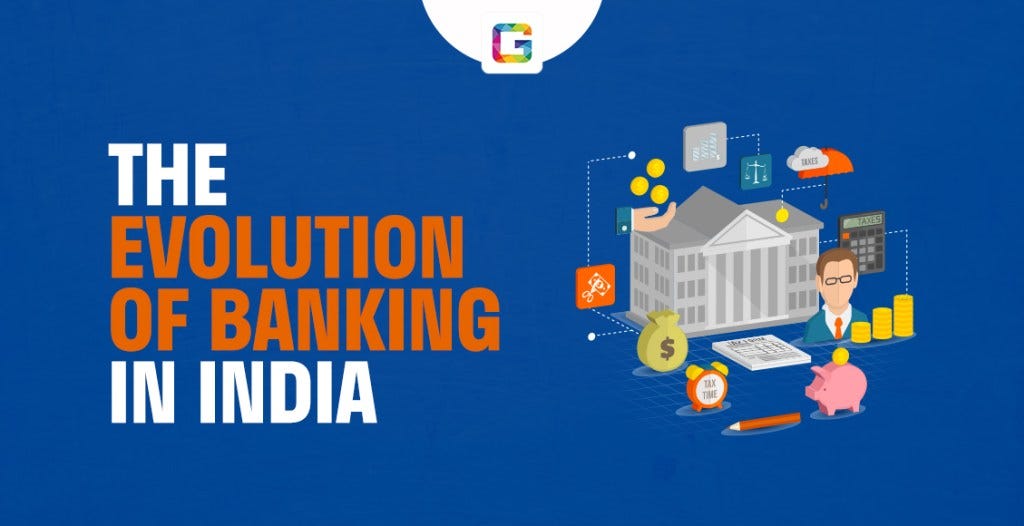
As compared to the foreign banks, the public sector banks appeared to be primitive, non-tech-savvy, unprofitable, and hence not competitive.
In the last three years itself, the government has infused one and a half million and more than one lakh crore of an amount as also given via recapitalization bond.
The government’s objective is apparent; it is working on a long-term strategy under which the number of public sector banks has reduced from 28 to 12, and the government wants to reduce this number further.
The current government‘s entire strategy seems to have been to merge the financially unstable banks with the larger, more stable banks, and the rest be put up for sale.
The result will be that the present government will be saved from the trouble of putting capital in these banks in order to protect them or to improve their financial condition.
The former governor of RBI, Y. Venugopal Reddy, believed that the decision to nationalize banks was purely political back in 1969 and similarly the decision to privatize them is also a political decision. In the current, it seems that the political decision has been made.

Thirdly, the striking employees of the banks have also alleged that the reason for nationalizing banks in the first place was to ensure that it helped with the growth of the country as a whole and no to concentrate and limit their business only towards profitability, and hence the current decision is against this very concern.
They have pointed out the examples of ICICI, Yes Bank, Axis Bank, and Lakshmi Vilas Bank, where fraud and other illicit financial activities were discovered which were to favor the bosses and not the bank. Hence, it weakens the logic and the reasoning that private banks work better. However, it is also the government’s own decision to step in and rescue the failing bank. The responsibility is shoved on to public sector banks by way of mergers.
Suppose we were to compare the private banks with the government banks. In that case, it is pretty clear that the private banks by far are much more advanced than the government banks, and the reason for the same is evident within these banks and also via the relationship of the government with these banks.
Another argument by the striking employees is that instead of strict rules to recover the failed payments, the government instead came out with IBC rules which is nothing but a game plan by which it is the public sector banks that are forced to take a “haircut” by which even less then the principal amount of defaulted money is recovered.
In conclusion, one can only say that it is ironic that the reasons why the banks were nationalized in the first place, the reason as to why the public sector banks have been faltering and have not been able to achieve a competitive edge is because of the government policies itself and the price for the same has been borne by public sector banks and now their employees.


